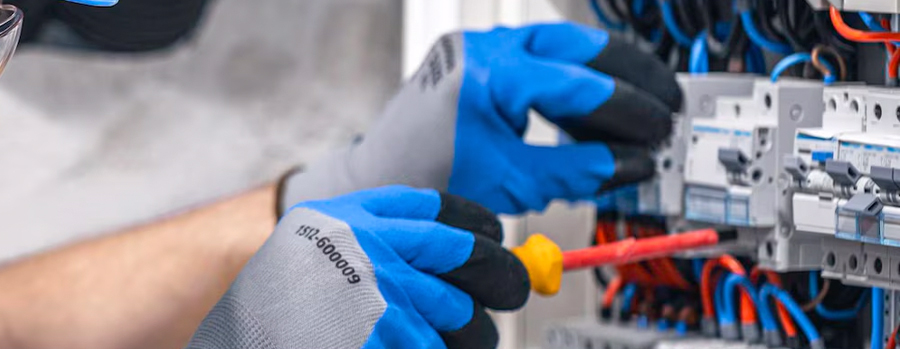Fiber Optic Testing and Maintenance Protocols: Critical Steps for Reliable Connections
Fiber optic networks are the backbone of modern communications infrastructures, with the capacity to provide high-speed data transmission. However, regular testing and maintenance are vital to maintain the performance and reliability of these networks. Fiber optic testing and maintenance protocols not only maintain the reliability of the network, but also allow for early detection of potential failures and optimization of performance. In this article, we will examine the importance of fiber optic testing and maintenance protocols, the methods used, and how these processes should be managed.
The Importance of Fiber Optic Testing and Maintenance
Although fiber optic cables are more durable and reliable than traditional copper cables, they can experience performance loss due to environmental effects, physical damage, or wear and tear over time. This can lead to interruptions or slowdowns in network connections. Regular testing and maintenance detects such problems in advance, ensuring that network performance remains consistently high.
Implementing regular maintenance protocols for network operations also reduces costs in the long run. Problems detected early can be resolved before they lead to major failures, and major repair costs can be avoided.
Fiber Optic Test Protocols
Fiber optic test protocols include a number of methods used to evaluate network performance and detect potential problems. These tests help determine the quality and data transmission performance of fiber optic cables. Here are the most commonly used fiber optic test methods:
Optical Time Domain Reflectometer (OTDR) Test:
Description: OTDR testing is a test method used to detect signal loss, connection errors, and physical damage in fiber optic cables. This device sends a light signal along the fiber and analyzes the reflected signals to identify problem spots in the fiber.
Advantages: OTDR testing provides detailed fault analysis in fiber optic cables and evaluates the overall performance of the network. It is especially used effectively in long-distance connections.
Power Meter Test:
Description: Power meter testing measures the power of the optical signal passing through the fiber optic cable. This test is used to detect signal loss and evaluate network performance.
Advantages: Power meter testing, which is a simple and fast test method, can be applied regularly to check network performance.
Optical Source Test:
Description: Optical source testing is used to detect light loss in fiber optic connections. The test evaluates the performance at the connection points by sending a light signal of a specific wavelength.
Advantages: Optical source testing is ideal for quickly evaluating the reliability and performance of fiber connections.
Inspection with a Fiber Optic Microscope:
Description: Fiber optic microscopes are used to examine the cleanliness and smoothness of fiber ends. Dirty or damaged fiber ends can cause signal loss and network performance degradation.
Advantages: This inspection is an important step to clean the fiber ends and ensure proper alignment.
Fiber Optic Maintenance Protocols
Regular maintenance is essential to ensure the longevity and reliability of fiber optic networks. These maintenance protocols optimize network performance and prevent major failures. Here are the basic maintenance protocols that should be implemented in fiber optic networks:
Regular Cable Inspections:
Explanation: Regular inspections of fiber optic cables help detect signs of physical damage or wear. It is important to check the outer jackets of the cables and to examine for any kinks or stretch along the cable.
Advantages: Regular inspections prevent minor damage from causing major problems and ensure uninterrupted network operation.
Connector Cleaning:
Explanation: Fiber optic connectors can become dirty over time, which can cause signal loss during data transmission. Regular cleaning of connectors plays a critical role in maintaining performance.
Advantages: Connector cleaning reduces signal loss and improves the quality of network connections.
Environmental Controls:
Explanation: Fiber optic cables can be affected by environmental conditions. Factors such as high temperature, humidity or dust can damage the cables. Therefore, it is important to regularly check the environment where the cables are located and take the necessary precautions.
Advantages: Environmental controls extend the life of fiber optic cables and help detect potential problems in advance.
Spare Parts and Emergency Plans:
Explanation: In the event of a possible failure, it is important to keep spare parts and emergency response plans ready. Spare fiber optic cables, connectors and other equipment should be available for quick repairs.
Advantages: Emergency plans minimize network outages and shorten repair times.
Continuity of Testing and Maintenance in Fiber Optic Networks
Ensuring continuity of testing and maintenance in fiber optic networks is critical to maintaining network performance and reliability. These processes should be implemented at regular intervals, not just in the event of a failure. Additionally, documenting and monitoring maintenance and testing protocols helps prevent future problems.
Conclusion
Fiber optic testing and maintenance protocols play a vital role in optimizing network performance and ensuring reliability. Regular testing and maintenance practices extend the life of fiber optic cables and minimize the risk of interruptions to network operations. Early detection of problems can be resolved before they become major failures, reducing operating costs. It is important to make testing and maintenance protocols a priority to ensure the efficient and uninterrupted operation of your fiber optic network.
If you want to learn more about fiber optic testing and maintenance solutions or want to optimize your network performance, you can contact our expert team. We can help you secure your network infrastructure by providing you with the most suitable solutions.






